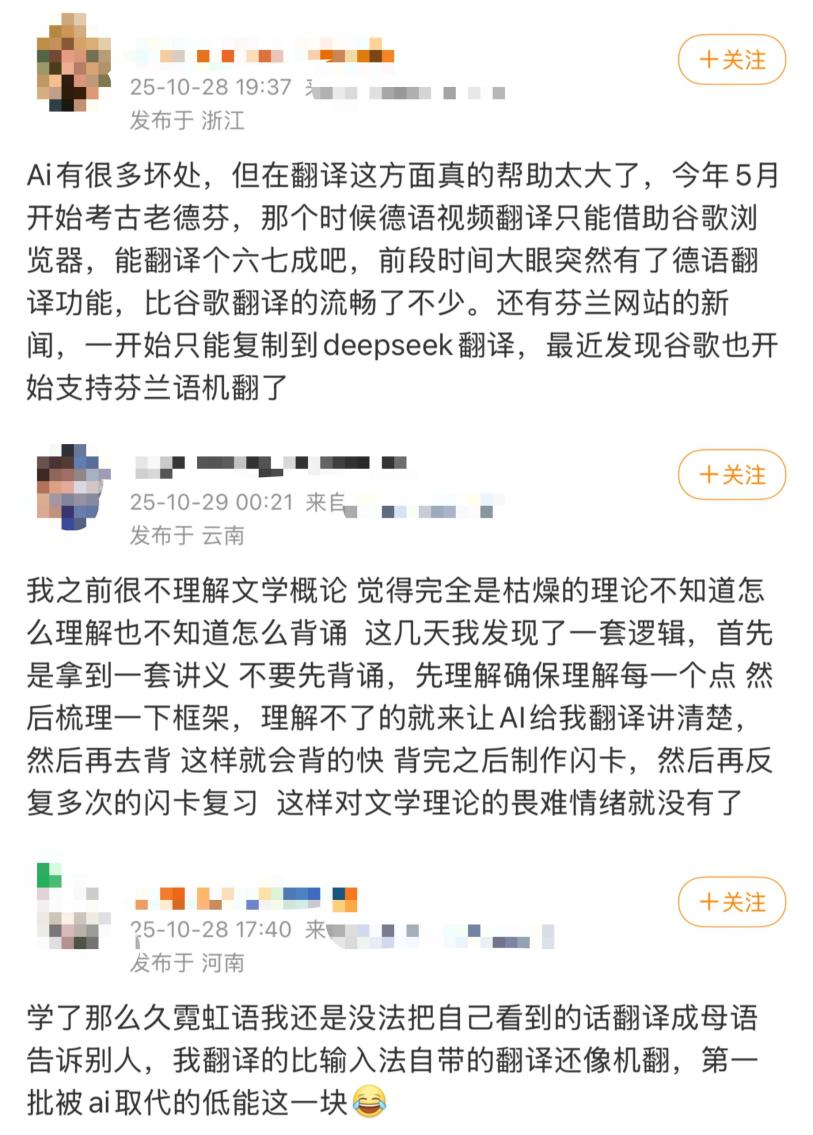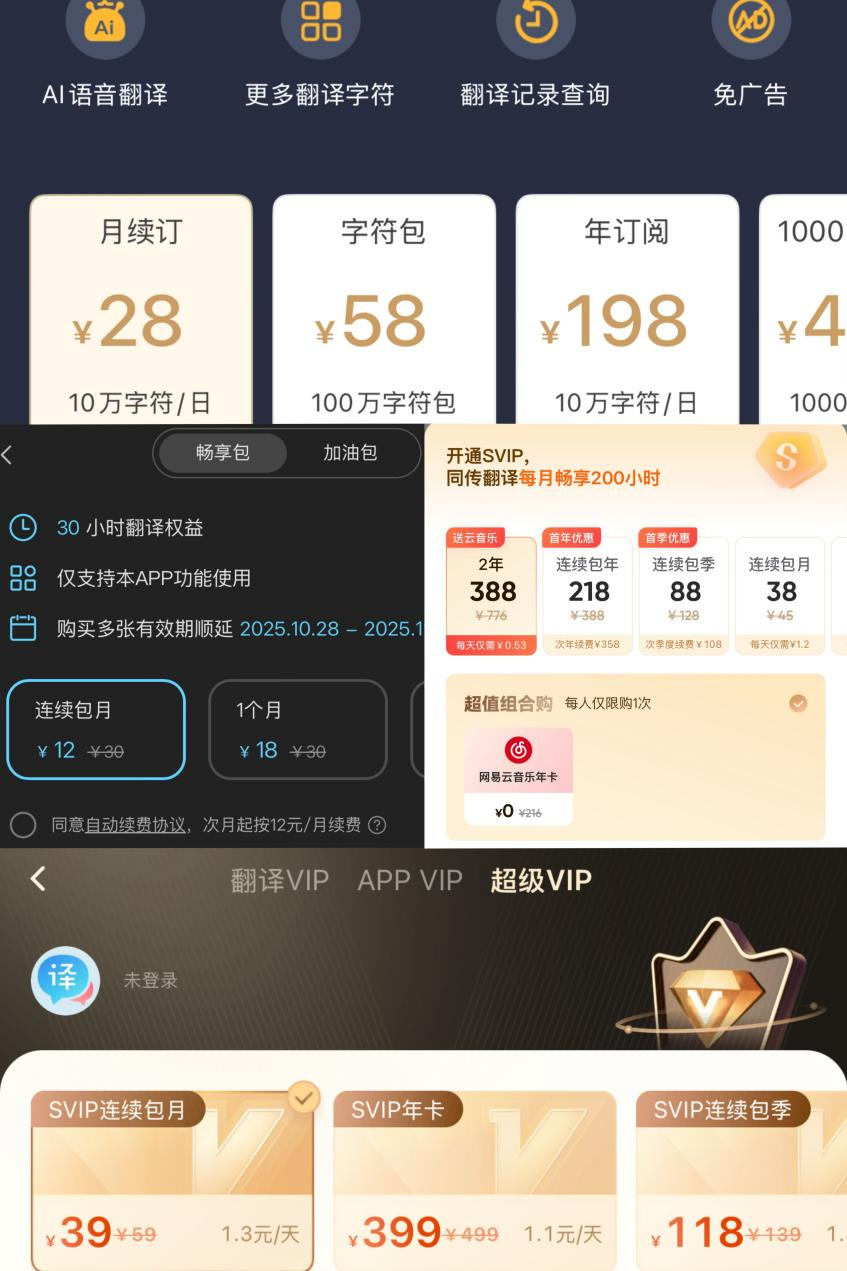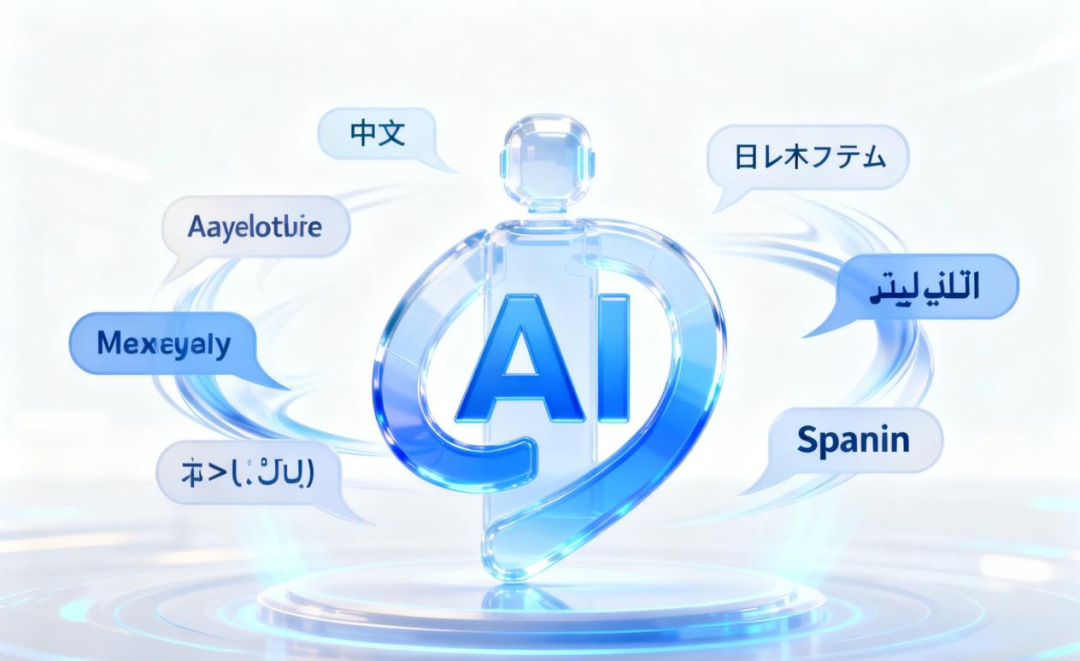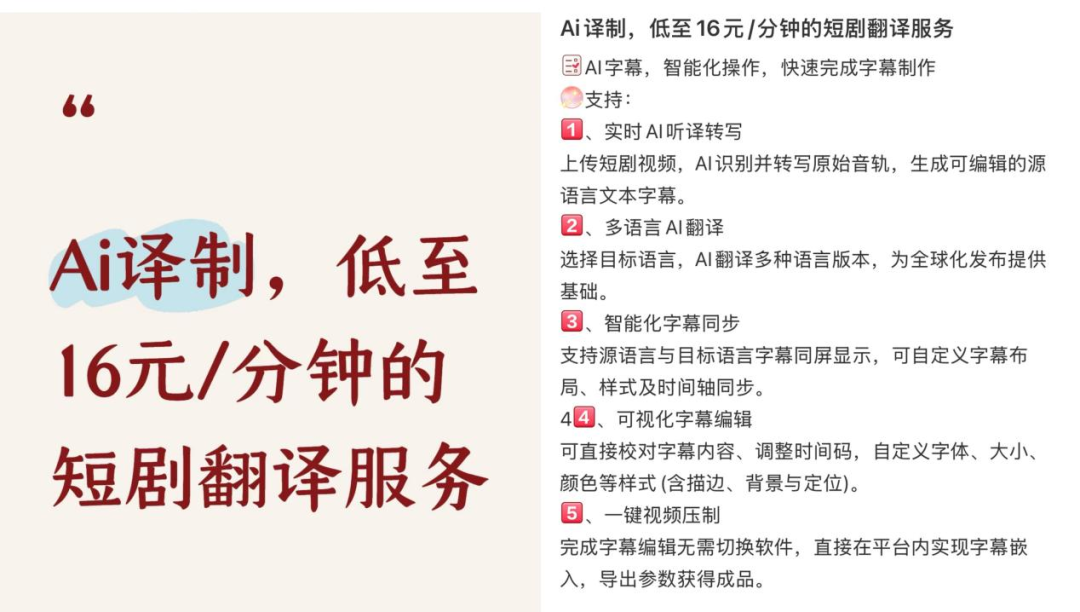AI Deals a Heavy Blow to the Translation Industry: Human Translators Confront a 'Battle for Survival'
![]() 10/29 2025
10/29 2025
![]() 443
443

Image Generated by AI
The Translation Industry Faces a Structural Downturn
Written by/ Meng Huiyuan
Edited by/ Chen Dengxin
Formatted by/ Annalee
The translation sector has long been regarded as one of the industries highly susceptible to replacement by AI.
Now, this perspective has shifted from mere conjecture about the future to a reality supported by data and case studies. The closure of the Monterey Institute of International Studies, often dubbed the "Harvard of Translation," has sent shockwaves throughout the translation community, signaling a decline closely tied to the rise of AI. NetEase Youdao Dictionary's "AI Simultaneous Interpretation" service has amassed over 20 million users, drawing widespread attention to the commercialization of AI translation. The discreet entry of AI into the market has driven translation prices down to unprecedented lows.
In practice, today's AI translation tools can not only swiftly convert between multiple languages but also automatically recognize and adapt to context during the translation process, resulting in more precise and fluent outputs. This technological leap, combined with the active involvement of internet giants, AI leaders, and startups, has reshaped the competitive landscape within the translation industry.
AI Simultaneous Interpretation Disrupts Human Translators' Core Market
"AI translation has reached a stage where it can provide simultaneous interpretation. It seems that for most people, learning foreign languages may no longer be necessary in the future. For a select few, it might become a hobby, akin to calligraphy or painting."
"In fact, major foreign publishers are already experimenting with AI translation. They have developed their own specialized AI systems. Although these systems are not yet very user-friendly, it's likely that they will not require dedicated human translators in the future, except for proofreading purposes."
"Rather than competing with AI in terms of speed and accuracy, translation professionals should now consider shifting their focus to areas where AI still falls short, such as creative translation for gaming, lyrics, brand advertising localization, or high-end demands in legal and medical fields that require specialized knowledge. Alternatively, they could become reviewers of AI translation quality."
...
Prior to the massive surge of AI in 2025, there had already been intense debates about whether AI translation would largely replace human translators. The recent closures of the Monterey Institute of International Studies and the milestone achievement of NetEase Youdao Dictionary's "AI Simultaneous Interpretation" service have reignited these discussions.

Undoubtedly, under the influence of AI translation, translation and language majors are experiencing a structural downturn. Data indicates that AI translation efficiency has increased nearly ninefold, with costs reduced by an average of 90%. The "large model initial translation + human assurance" approach is gradually becoming the norm. According to the "Artificial Intelligence and Translation Report," 97.1% of translation companies in China now utilize translation technology, with 26.0% of projects adopting a "fully machine-translated delivery" model and another 33.2% using a "machine translation + post-editing" model.
A joint report by the National School of Development at Peking University and Zhaopin highlights that editing and translation jobs are particularly vulnerable to the impact of large models, with a notable decline in job postings and higher requirements.
This employment trend, reflected at the source of talent cultivation, has led to a direct consequence: Beijing Language and Culture University has ceased enrolling students in seven translation programs, including Russian translation, Japanese interpretation, German translation, Korean translation, and Spanish translation, for its 2025 master's degree program. In its 2026 graduate enrollment adjustments, Southeast University plans to discontinue its Russian language and literature and Spanish language and literature programs, while Hebei University plans to discontinue its English interpretation and Japanese interpretation programs.
It appears that the living space for human translators is being rapidly encroached upon by AI, especially in simultaneous interpretation, the most challenging and promising segment of the translation industry, where AI is proving to be virtually unstoppable.
According to the "2025 Remote Simultaneous Interpretation Platform Market Report," the Chinese remote simultaneous interpretation market is expected to reach RMB 2.37 billion this year, marking a nearly 30% year-on-year increase. In the AI translation market, which is worth billions, this growth rate significantly exceeds the industry average.
The breakthrough in NetEase Youdao Dictionary's user base underscores the accelerating commercialization of AI translation. Compared to the high costs associated with traditional simultaneous interpretation, AI models boast lower marginal costs, as evidenced by their market prices.
As a premium service in the translation industry, simultaneous interpretation prices are influenced by factors such as interpreter qualifications, conference difficulty, and language rarity, resulting in generally high fees. For English simultaneous interpretation, daily fees range from several thousand to over ten thousand yuan, while for less common languages, prices are typically about 50% higher than English under the same demand conditions.
Software providers like NetEase Youdao, Baidu Translation, and iFlytek Simultaneous Interpretation generally offer free trial services for a certain period, enticing users to subscribe to monthly or annual memberships. Despite some providers limiting usage, the daily cost as low as a few cents is virtually unbeatable by AI.

AI Simultaneous Interpretation Prices Are Generally Low
However, it would be premature to view AI translation and human translators as mutually exclusive. Recently, at the "AI-Empowered Interpretation Education and Practice International Seminar," guided by the Translators Association of China and hosted by Beijing Foreign Studies University, with support from the Interpretation Committee of the Translators Association of China, several industry experts shared insights into the new opportunities and challenges in interpretation practice in the AI era, emphasizing the dominant role of human interpreters and the tool nature of AI.
The aforementioned industry consensus sufficiently demonstrates that the disruptive changes brought by AI to the translation industry aim to optimize the industry's productivity structure rather than simply replace human labor.
In other words, the portion of human labor easily replaceable by AI primarily undertakes basic, repetitive, and uncreative tasks in translation work, while aspects requiring profound language skills, cultural background knowledge, and creative thinking remain the "main battlefield" for human translators.
'Multi-Power Competition' Emerges, Potentially Facing a Reshuffle Period
If we fully leverage the tool nature of AI translation, the key to determining its promotion and application speed lies in whether the current "cabbage prices" are sustainable in the long run.
From a market perspective, internet giants like NetEase Youdao leverage their strong technological capabilities and vast user bases to swiftly secure a foothold in the AI translation market. AI leaders like iFlytek rely on their deep accumulation in speech recognition and synthesis to continuously optimize the voice interaction experience of AI translation, making its application in real-time scenarios smoother and more natural, further expanding its application boundaries. Startups relying on general-purpose large models like DeepSeek either focus on in-depth optimization for specific languages or domains or strive to develop personalized translation features, attempting to gain a share in this blue ocean market...

Under the "multi-power competition" landscape, each player possesses unique competitive advantages and strategic positions.
First, internet giants have the core advantage of a vast user base and rich data resources. This massive user data is crucial for training and optimizing AI translation models, enabling AI to better understand semantics and expression habits in different contexts. Moreover, these giants possess strong technological R&D capabilities and financial resources, allowing them to invest heavily in AI algorithm R&D and upgrades.
The core advantage of AI leaders undoubtedly lies in technology. With years of deep cultivation in the AI field, they boast top-notch research teams and advanced technological architectures. In AI translation, they continuously introduce innovative algorithms and models, enhancing translation accuracy and fluency. For instance, significant breakthroughs in end-to-end simultaneous interpretation technology have led to qualitative leaps in AI translation accuracy, response speed, and broadcast naturalness.
As emerging forces, startups typically leverage their flexible innovation mechanisms and keen insights into user needs. They can quickly respond to market changes and launch distinctive AI translation products, such as developing customized translation solutions for specific industries or scenarios to meet personalized user demands.
In terms of commercialization exploration, the operational strategies of these three types of players are diverse and targeted.
Internet giants, exemplified by NetEase Youdao, embed AI translation functions within their dictionaries as an "ecosystem integration" strategy, enhancing user stickiness through one-stop services. AI leaders, like iFlytek, focus more on technological innovation, with their AI translation earphones as a combination of hardware and software services, aiding in pioneering the high-end business market. Startups primarily concentrate on the needs of specific languages, domains, or user groups, developing high-value-added translation services for B2B (business-to-business) markets or launching innovative and differentiated translation products for B2C (business-to-consumer) markets.

AI Commercial Order Advertisements
It is evident that the AI translation industry is currently in its initial stage of "winnowing the wheat from the chaff," filled with opportunities and challenges. With its advantages of speed, convenience, and relatively low costs, AI translation can undoubtedly quickly secure a place in the market, becoming the preferred tool for many enterprises and individuals to overcome language barriers. However, the initial stage also means the industry is not yet mature, with numerous issues to overcome.
On the one hand, despite continuous advancements in AI translation technology, it still struggles to match the accuracy and nuance of human translation in handling complex contexts, cultural differences, and professional terminology. This limits its application in fields with extremely high translation quality requirements, such as law, medicine, and literature. This market gap also provides the last bit of maneuvering space for relevant practitioners to struggle or transform.
On the other hand, competition in the AI translation market is bound to intensify. With the popularization of technology and lower entry barriers, more enterprises and individuals are entering this field. While this promotes market prosperity, it also brings about negative phenomena such as price wars and homogeneous competition, affecting the industry's healthy development. Given the current market average prices, amidst profitability anxieties, it's hard to guarantee that the industry won't experience a large-scale "price hike" in the future.
Faced with these challenges, perhaps leveraging AI translation as a tool under human oversight is currently the optimal solution in the translation field.








